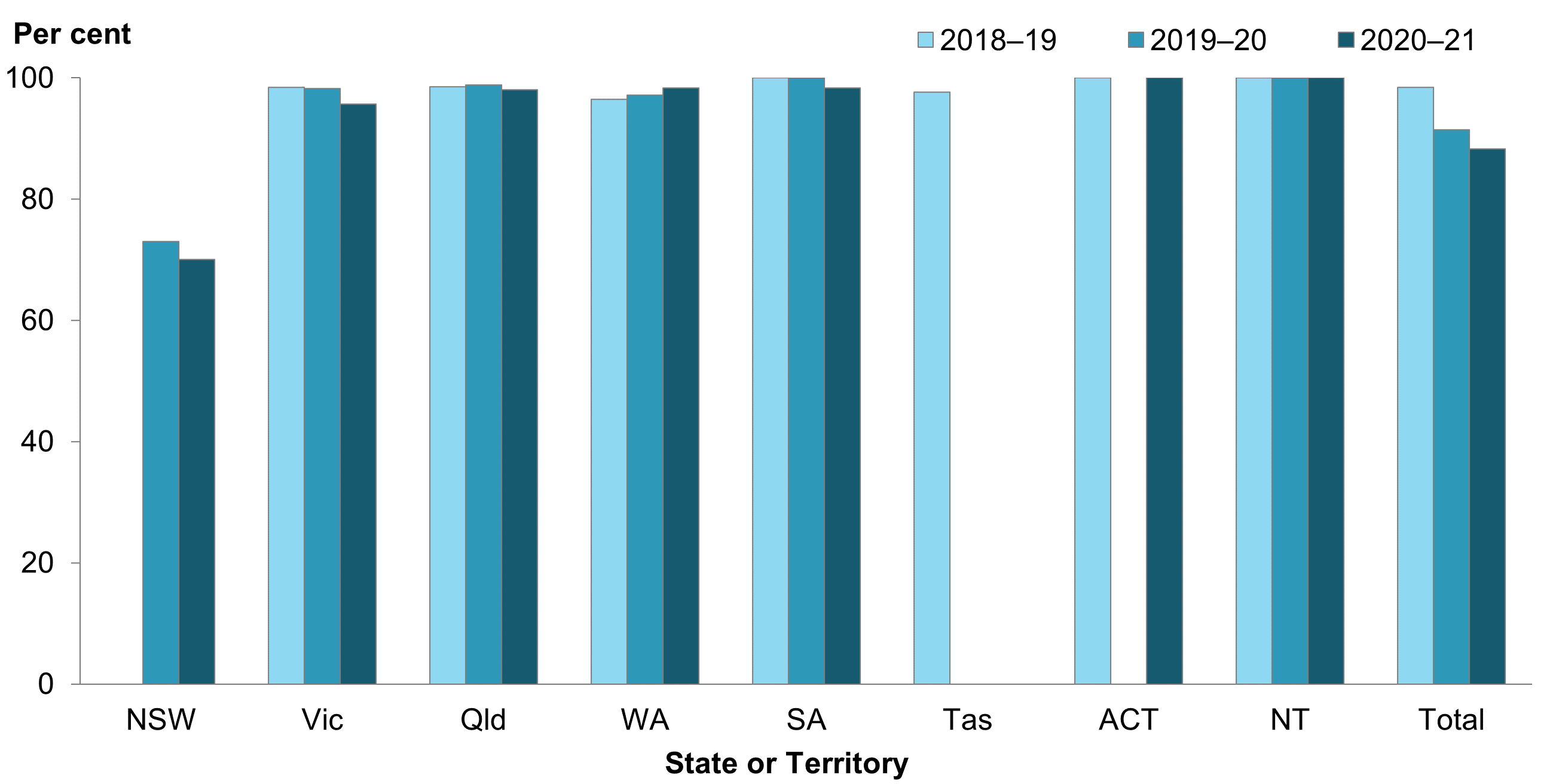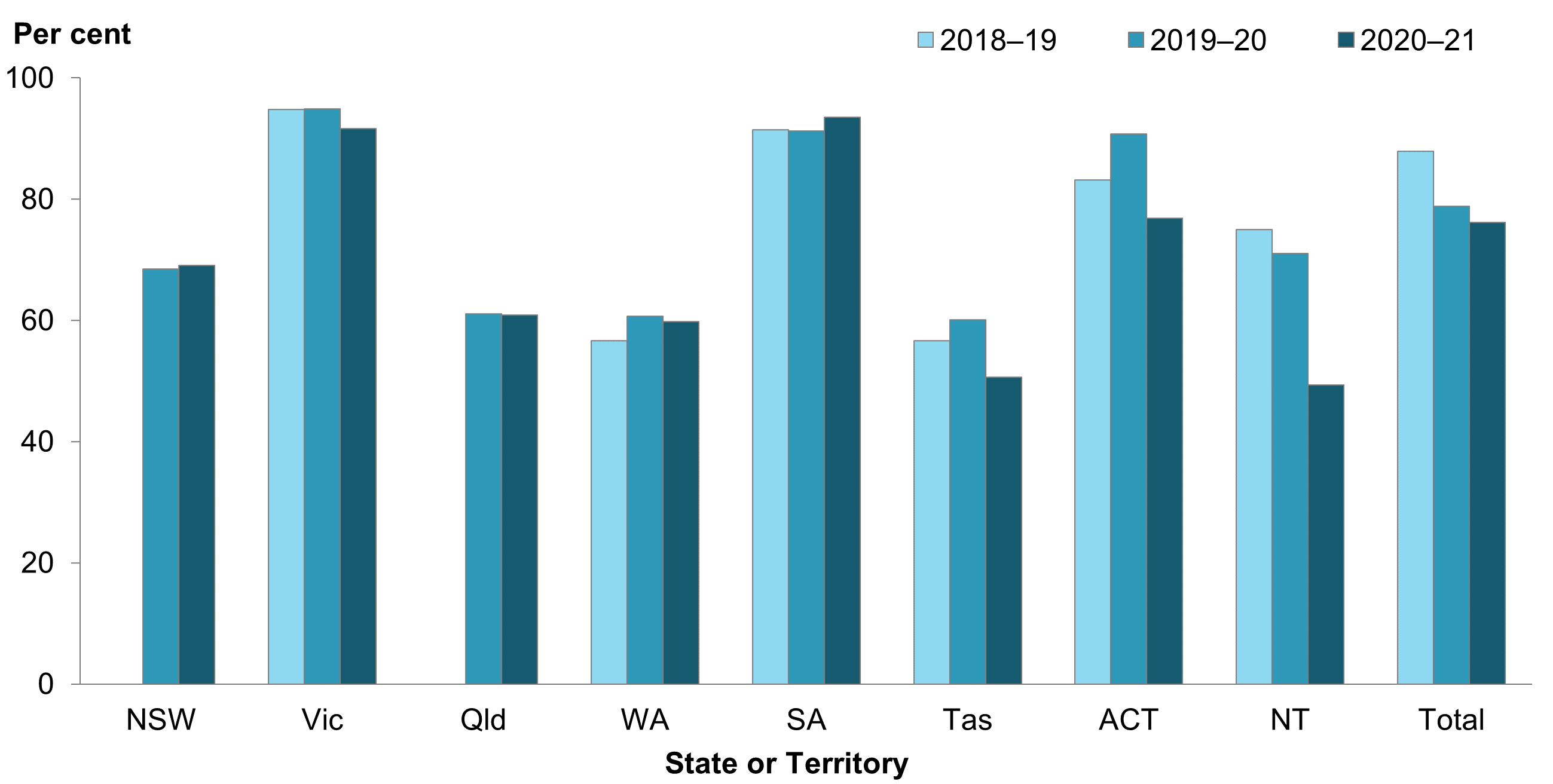Legal permanency
It is generally agreed that permanency planning should commence from the time children are admitted to out-of-home care. Before a suitable legal permanency outcome is identified and achieved, a child may be on interim/temporary orders and/or other arrangements (Osmond and Tilbury 2012).
Legal permanency can involve full or partial transfer of legal guardianship to the relevant state or territory department or non-government agency. A finalised care and protection order involves transfer of some responsibility for the child’s welfare to the relevant child protection department or non-government agency. Guardianship orders involve transfer of legal guardianship to the relevant state or territory department or non-government agency.
Reunification does not change the legal status of parents. Third-party parental responsibility orders and adoption involve transfer of all parental responsibilities to a nominated person(s) whom the court considers appropriate. For adoption, any legal rights of the parents are also removed permanently.
For more information on legal permanency, including details on the policy and practises used by each state and territory, refer to Appendix F of Child protection Australia 2018–19 (AIHW 2020).
Within 2 years of entering out-of-home care
In most jurisdictions a long-term stable placement will be pursued if a child is not reunified within 2 years of entry to out-of-home care (see Appendix G of Child protection Australia 2018–19, AIHW 2020). However, time from admission to out-of-home care to achieving a permanency outcome or long-term guardianship order for children varies considerably across jurisdictions (see Figure 4; tables S2.2a and S2.2b). This is due mostly to the different mix of permanency outcomes in each jurisdiction, as well as differences in policy and practice priorities. It is nevertheless recognised that family-led and evidence-based decision making takes time, to ensure outcomes for children that are sustainable and stable over the long term.
Reunifications tend to occur shortly after admission, whereas guardianship or third-party parental responsibility orders can occur much later. Average time to achieving a permanency outcome therefore varies across states and territories, based at least in part on the relative proportions of reunifications versus guardianship or third-party parental responsibility orders each pursues (Table S2.2b).
Indicator 2.1 measures the proportion of children aged 0–17 in out-of-home care who received a finalised care and protection order in the reporting period within 2 years of admission to out-of-home care.
- Of the 7,700 children who received a finalised care and protection order in 2020–21, 88% received it within 2 years of admission to out-of-home care. This proportion was the same for the 3,000 Indigenous and 4,700 non-Indigenous children who received a finalised care and protection order (Table S2.1).
- The proportion of children receiving a finalised care and protection order within 2 years of admission to out-of-home care ranged from 70% in New South Wales to 100% in the Australian Capital Territory and Northern Territory (Figure 3).
Figure 3: Children aged 0–17 in out-of-home care who received a finalised care and protection order within 2 years of admission to out-of-home care, by state and territory, 2018–19 to 2020–21 (per cent) (Indicator 2.1)

Notes
- Data for New South Wales are not available for 2018–19.
- Tasmania and the Australian Capital Territory have requested suppression of numbers below 5 (excluding 0) and AIHW has applied additional suppression.
Chart: AIHW. Source: AIHW Child Protection Collection 2021 Table S2.1
Indicator 2.2 measures the proportion of children aged 0–17 in out-of-home care who received a permanency outcome or long-term guardianship order in the reporting period within 2 years of admission to out-of-home care.
In 2020–21:
- 76% of the 9,900 children who received a permanency outcome or long-term guardianship order did so within 2 years of admission to out-of-home care (Table S2.2a).
- The proportion of children receiving a permanency outcome or long-term guardianship order within 2 years of admission to out-of-home care ranged from 49% in the Northern Territory to 94% in South Australia (Figure 4).
- 70% of the 3,500 Indigenous children who received a permanency outcome or long-term guardianship order did so within 2 years of admission to out-of-home care (Table S2.2a).
Figure 4: Children aged 0–17 in out-of-home care who received a permanency outcome or long-term guardianship order within 2 years of admission to out-of-home care, by state and territory, 2018–19 to 2020–21 (per cent) (Indicator 2.2)

Notes: Data for New South Wales and Queensland are not available for 2018–19.
Chart: AIHW. Source: AIHW Child Protection Collection 2021 Table S2.2
References
AIHW (Australian Institute of Health and Welfare) (2020) Child protection Australia 2018–19, AIHW, Australian Government, accessed 15 June 2022.
Osmond J and Tilbury C (2012) ‘Permanency planning concepts’, Children Australia, 37(3):100–107, doi:10.1017/cha.2012.28.


